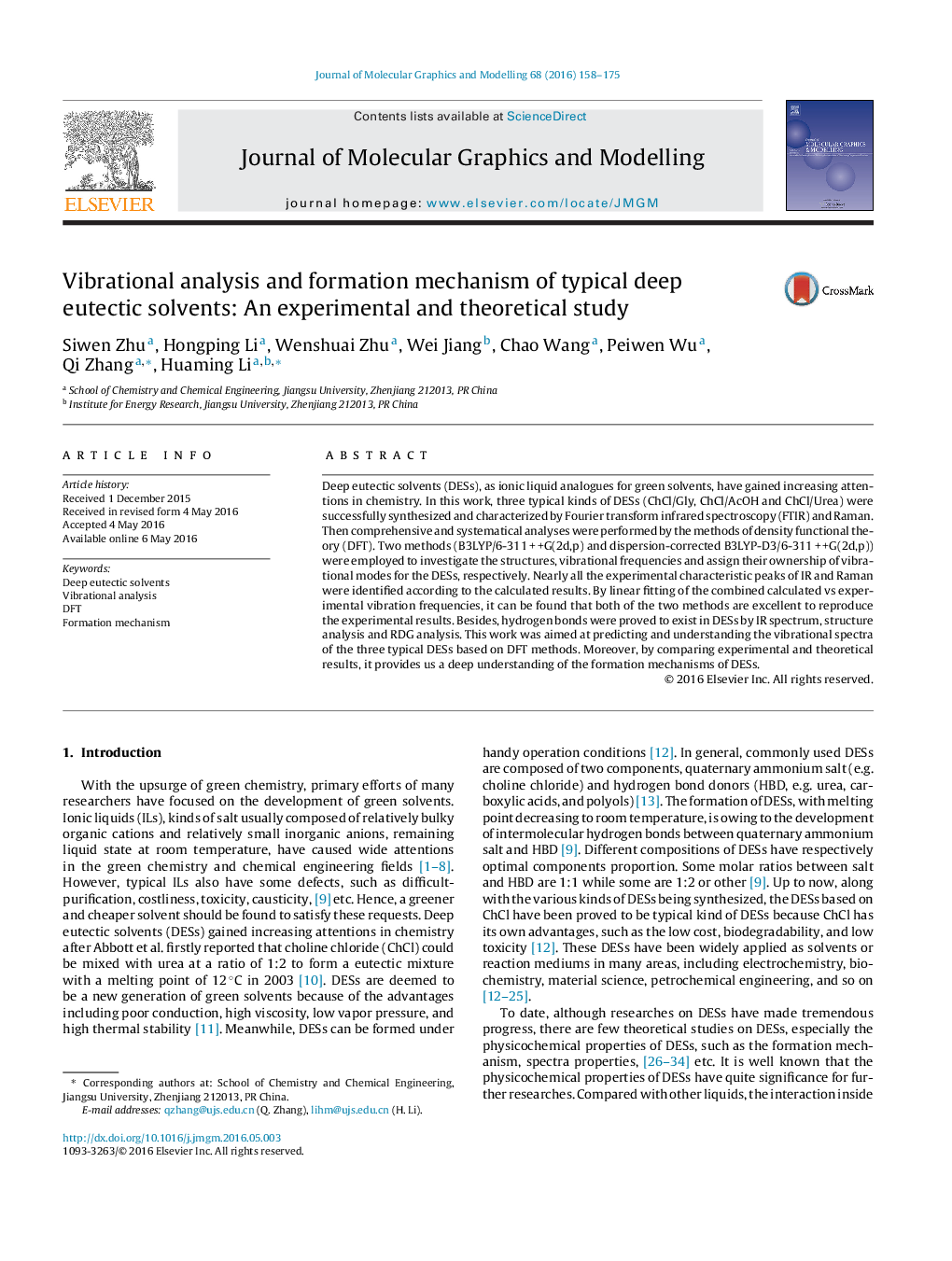| کد مقاله | کد نشریه | سال انتشار | مقاله انگلیسی | نسخه تمام متن |
|---|---|---|---|---|
| 443229 | 692690 | 2016 | 18 صفحه PDF | دانلود رایگان |
• The calculated spectra agree well with the experimental results. Experimental characteristic peaks have been assigned.
• Redshifts were observed and the formation of hydrogen bonds mainly contributes to the redshifts.
• Both of the B3LYP and B3LYP-D3 are excellent to reproduce the experimental results.
• The hydrogen bonds were proved to exist in DESs between the HBD and HBA by structure analysis and RDG analysis.
Deep eutectic solvents (DESs), as ionic liquid analogues for green solvents, have gained increasing attentions in chemistry. In this work, three typical kinds of DESs (ChCl/Gly, ChCl/AcOH and ChCl/Urea) were successfully synthesized and characterized by Fourier transform infrared spectroscopy (FTIR) and Raman. Then comprehensive and systematical analyses were performed by the methods of density functional theory (DFT). Two methods (B3LYP/6-311 + +G(2d,p) and dispersion-corrected B3LYP-D3/6-311 + +G(2d,p)) were employed to investigate the structures, vibrational frequencies and assign their ownership of vibrational modes for the DESs, respectively. Nearly all the experimental characteristic peaks of IR and Raman were identified according to the calculated results. By linear fitting of the combined calculated vs experimental vibration frequencies, it can be found that both of the two methods are excellent to reproduce the experimental results. Besides, hydrogen bonds were proved to exist in DESs by IR spectrum, structure analysis and RDG analysis. This work was aimed at predicting and understanding the vibrational spectra of the three typical DESs based on DFT methods. Moreover, by comparing experimental and theoretical results, it provides us a deep understanding of the formation mechanisms of DESs.
A bridge connecting experiment and calculation for deep eutectic solvents (DESs) has been built by density functional theory. The infrared and Raman spectra have been calculated to compare with experiment. Almost all the experimental characteristic peaks can be assigned according to computational results. Structure analysis and reduced density gradient analysis (RDG) have been carried out to deep understand the interactions in deep eutectic solvents.Figure optionsDownload high-quality image (217 K)Download as PowerPoint slide
Journal: Journal of Molecular Graphics and Modelling - Volume 68, July 2016, Pages 158–175
